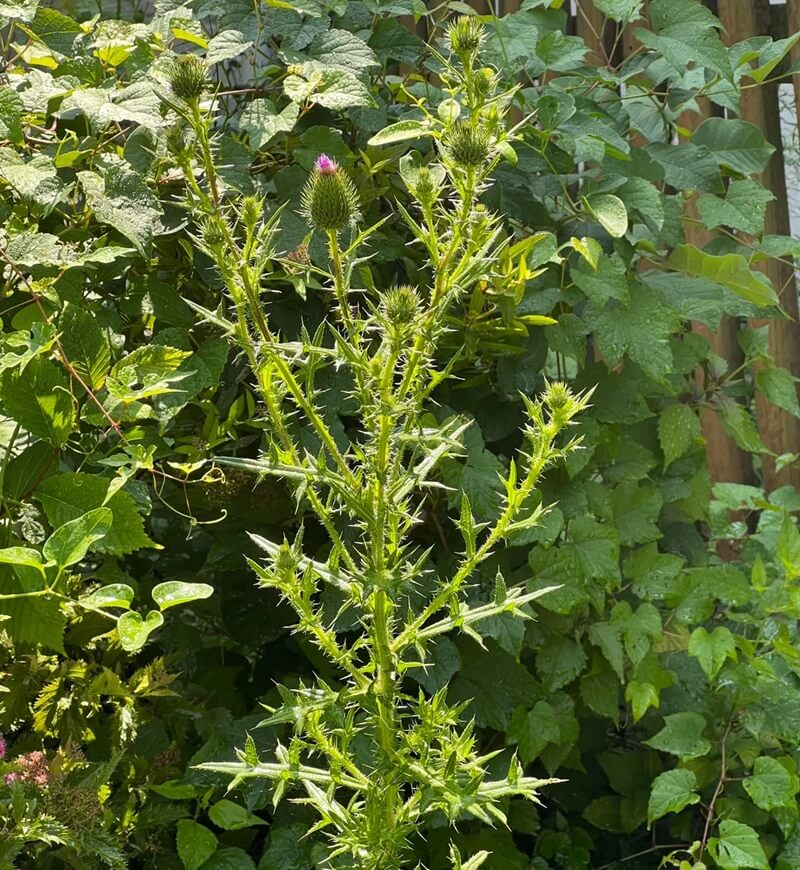A new homeowner was curious to learn about a plant that was rapidly taking over their yard, so they turned to the subreddit r/NoLawns to ask for insight.
"What is this 'weed?'" they wrote. "Letting my yard do its natural thing this summer and keep seeing these pop up tall and fast … My neighbors would no doubt tell me I should pull those out, but I'm curious to see what this community knows about them. Are they great pollinators? Or are they somewhat invasive to other plant life?"
The photos they included show a tall, spiky plant with purple flowers.


Commenters identified the plant as a thistle. "I'd lean towards bull thistle, which is highly invasive in the US. But definitely get another opinion," one wrote. "Friend who has been working on taking a plot of old farmland and rewilding it is fighting it constantly."
"Could be native Field Thistle or invasive Bull Thistle," another wrote, attaching a guide on telling the difference. "Looks like you've got porcelain berry growing behind it, though, which is highly invasive and should be pulled … The thing with just letting your lawn grow is that 80% of what grows is invasive, especially in the heavily colonized Northeast. So, you need to learn your plants and weed a lot."
Indeed, invasive plants like this thistle often hide in plain sight and include some common names that many new gardeners don't realize are invasive. English ivy looks innocent, but it often strangles native plants and can even choke trees. Similarly, species like bamboo, kudzu, and knotweed can grow so aggressively that they consume entire homes.
"I had some pop up *through* the plastic the previous owner put down. They didn't give a hoot," one person wrote.
"Took me two summers to get rid of it," another reported.
Someone else wrote: "I hate them so much. They pop up everywhere and are horrible to pull because of the deep taproot, thorns and gross milky sap."
Instead, consulting a list of native plants is the best way to rewild your yard responsibly. Not only are natives easier and cheaper to maintain than grass (or invasives, for that matter), but they also nourish wildlife and provide food and habitat for local pollinators.
One commenter concluded: "Letting your yard grow wild does not mean ignoring it altogether." About the thistle, they said it "will also outcompete native plants for space and resources. Left alone you'll probably end up with a monoculture of thistles, which isn't anything close to natural, or beneficial."
Join our free newsletter for easy tips to save more, waste less, and help yourself while helping the planet.









